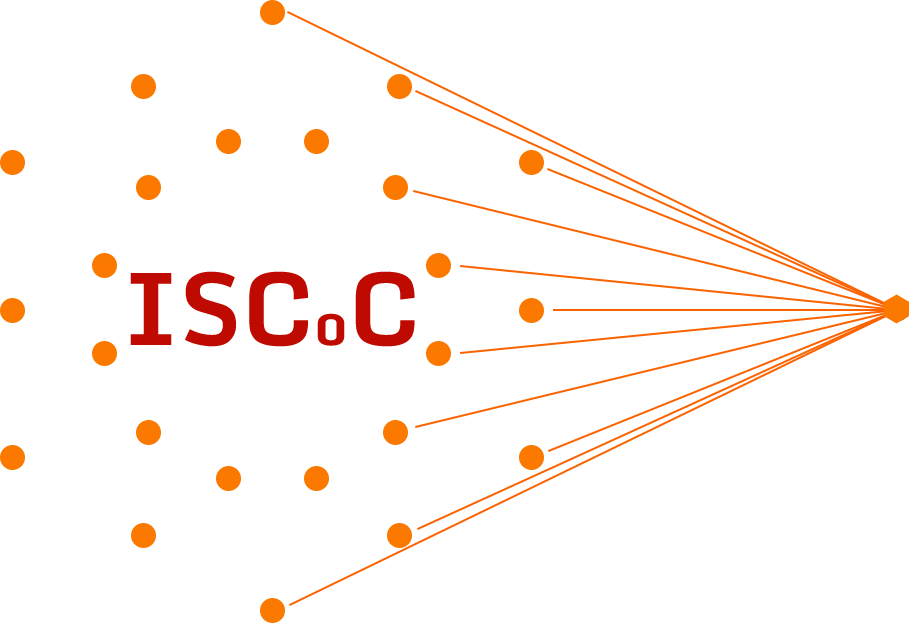
Ettore Majorana Foundation and Centre for Scientific Culture
President: Professor Antonino Zichichi
INTERNATIONAL SCHOOL of CRYSTALLOGRAPHY
Director: Sir Tom Blundell, FRS FMedSci
Cookies help us deliver our Services. By using our Services or clicking I agree, you agree to our use of cookies.
I agree cookie policy
Ettore Majorana Foundation and Centre for Scientific Culture
President: Professor Antonino Zichichi
Director: Sir Tom Blundell, FRS FMedSci
The 53rd course of the International School of Crystallography on the subject of Magnetic Crystallography, was organized by the Commission on Magnetic Structures of the International Union of Crystallography (IUCr-CMS, magcryst.org).. The scientific organizing team consist of Branton Campbell (Brigham Young University, USA), Maria Teresa Fernandez-Diaz (Institut Laue-Langevin, France) and Manuel Perez-Mato (Unversidad del Pais Vasco, Spain). The local organizing team (the “orange scarves”) was led by Annalisa Guerri (University of Florence, Italy) and Paola Spadon (University of Padova, Italy), and included computing and technical support from Erin Davis (USA), Andrea Giaccherini (University of Florence, Italy) and Andy Stewart (University of Limerick, Ireland).
Since the first magnetic neutron-diffraction experiments almost 70 years ago (1994 Nobel Prize), magnetic-structure research has grown tremendously within the materials physics, chemistry, and engineering fields (e.g. superconductivity, multiferroics, spintronics, information storage, molecular magnetism). Magnetic degrees of freedom lie at the heart of much of the exciting science being done today at international scattering facilities, and hundreds of magnetic structures are now published every year by a diverse range of research communities. In response to this progress, the crystallographic community is also rapidly developing and delivering new infrastructure with which to solve, refine, analyze and describe magnetic structures. Where chaos once reigned, consensus and remarkable new tools have emerged. The magnetic-crystallography was organized to address key advances in magnetic-structure research, as well as the foundational and state-of-the-art of theoretical, experimental, and computational capabilities that made these advances possible. The program, which includes both lectures and many hands-on-tutorials, was designed to engage both new and veteran members of the magnetic-structure community.
The school included a roughly 50/50 combination of lectures and hands-on workshops, all of which were conducted in the San Domenico facility. Three hours of workshops were held each morning, with two sessions conducted in parallel. The state-of-the art computational tools represented in the workshops included FullProf, JANA 2006, SARAh, the Bilbao Crystallography Server, the ISOTROPY Software Suite, GSAS-II, and TOPAS. Workshop presenters delivered tutorial instructions, data files, and software downloads to participants in advance of the school. Both introductory and advanced tutorial exercises were provided, in order to fully engage beginners and experts alike. Three hours of lectures were presented each afternoon in the large (200 seat) Dirac lecture hall. Topics included the experimental determination and communication of magnetic structures, the theoretical and mathematical foundations of magnetic symmetry and representational analysis, and a wide variety of applications. Each of the 17 presenters, in addition to contributing a lecture, also provided lecture notes in manuscript form. Lecture slides and recorded lecture videos were also optionally made available by many of the presenters. On the evening of the first day of the school, we met jointly with the parallel Cryo-EM school in Dirac Hall to hear a lecture on the history and culture of Erice by Martin Schmidt (University of Frankfurt, Germany). The technical program ended with a one-hour panel discussion of questions submitted by the participants.
As mandated by IUCr, a key sponsor of the school, there were no restrictions on geographical affiliations of the participants. The school was advertised internationally, with a special emphasis on reaching out to researchers in countries that are not typically well represented at such meetings. From among the roughly 100 applicants, 57 participants (not including the presenters) were selected based on their preparation and ability to benefit from attendance. Additional participants could not be accommodated due to space limitations. The participants and presenters came from 17 different countries, more than half of which were outside of Western Europe or North America. There were significant numbers from each of Russia and Eastern Europe, Asia, South America, and India. Among participants, 40% were women. Regarding the speakers, 18% were female.
Of 40 submitted participant abstracts, 10 were selected for oral presentations (22 minutes or 15 minutes), including Shivani Sharma (JNCASR, Bengaluru, India), Anna Matveeva (Petersburg Nuclear Physics Institute, Gatchina, Russia), Jose Luis Garcia-Munoz (ICMAB-CSIC, Barcelona, Spain), Stephanie Gneuwuch (U. Maryland, USA), Anuradha Vibhakar (U. Oxford, UK), Elena Solana Madruga (U. Edinburgh, UK), Stefanie Siebeneichler (Stockholm U., Sweden), Fernando Pomiro (U. Warwick, UK), Claire Colin (Institut Néel, U. Grenoble-Alpes, France), and Francoise Damay (Laboratoire Léon Brillouin, Gif-sur-Yvette, France). For this selection, 80% of the participants were women. The two poster sessions for participant research were also of very high quality and were well attended during the school. Three of these posters were selected by a panel of judges for awards, which were presented during the closing ceremony, which included Premakumar Yanda (JNCASR, Bengaluru, India), Rebecca Scatena (U. Bern, Switzerland), and Guru Khalsa (Cornell U., USA).
To facilitate interaction between and among the participants and presenters, the school included a rich social program, which included several social dinners, an evening with local musicians and performers, excursions to historical sites in the region, and daily lunch and coffee breaks. In the relaxed atmosphere, the organizers attempted to become personally acquainted with each participant. We are confident that the school initiated many long-term friendships and collaborations.
In the last days of the course, a survey was sent to all participants and speakers, 72% of them replied. The course was well received (89/100) and participants express the opinion that there should be another school of this kind in 1 or 2 years from now.